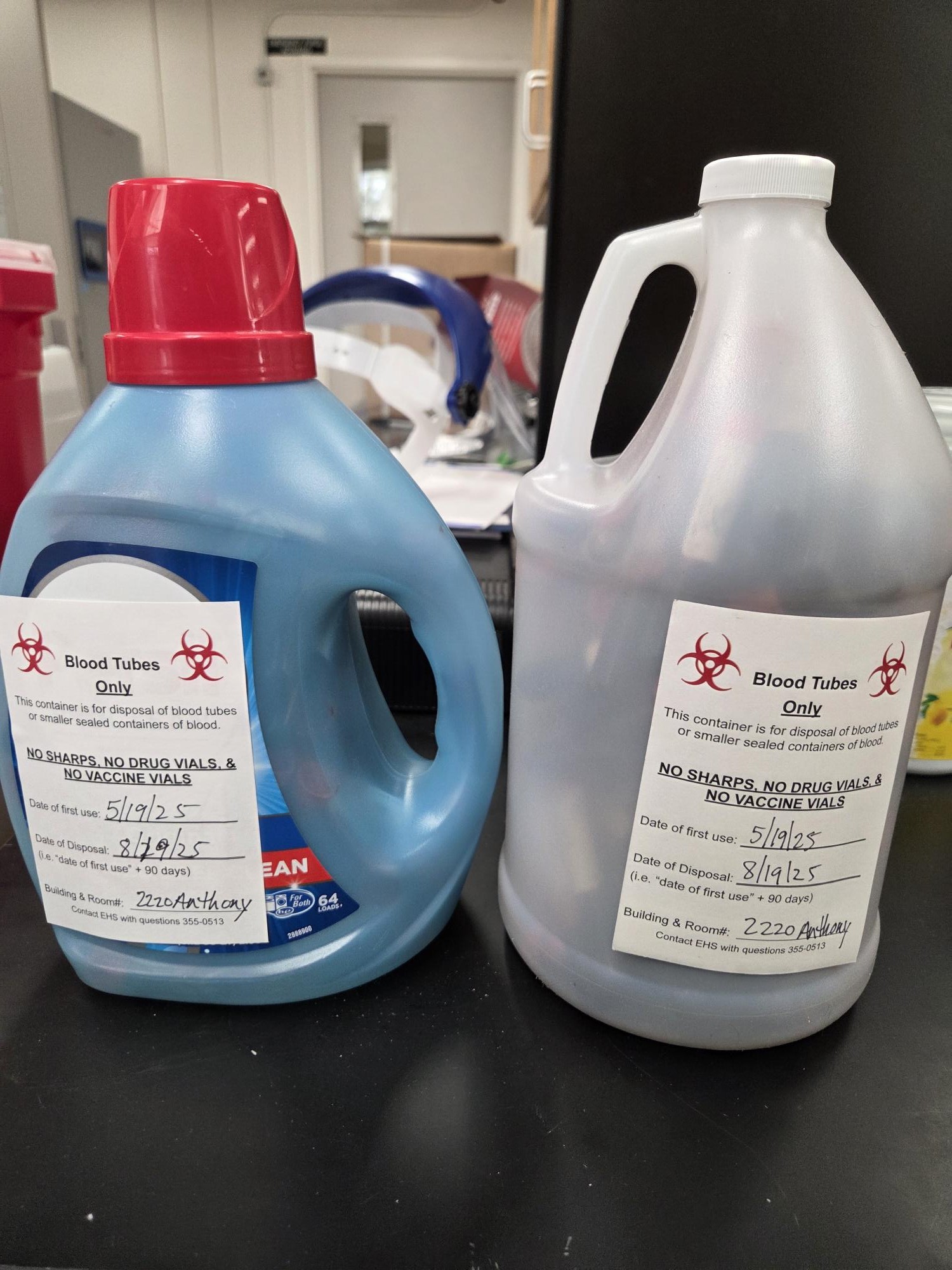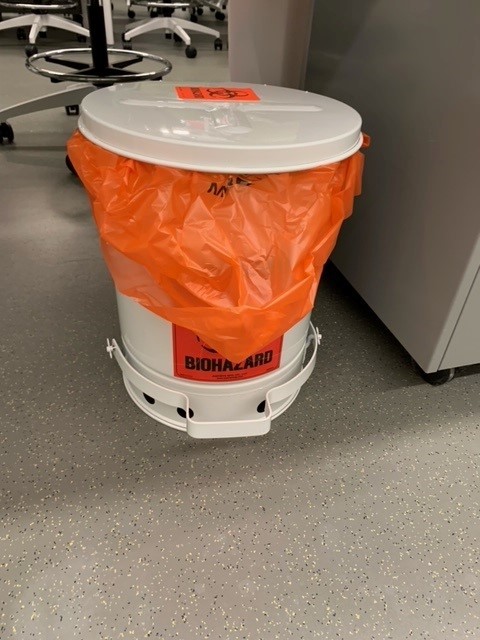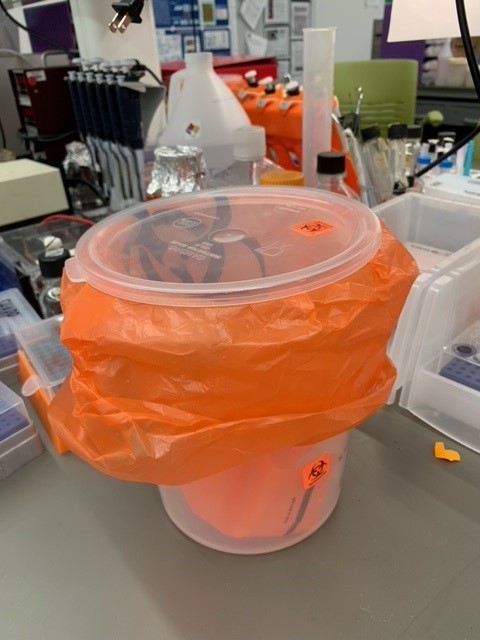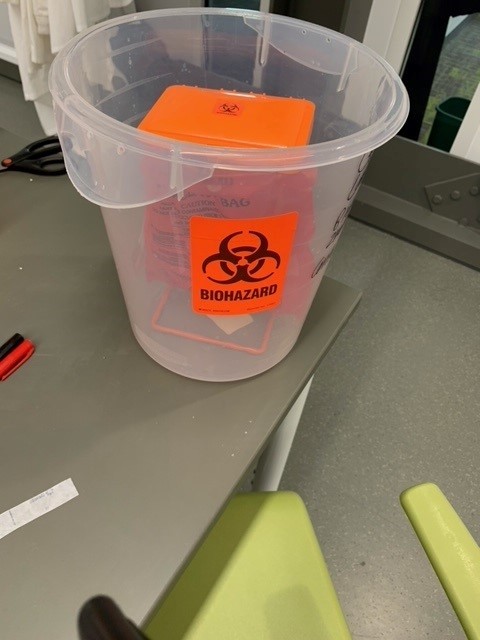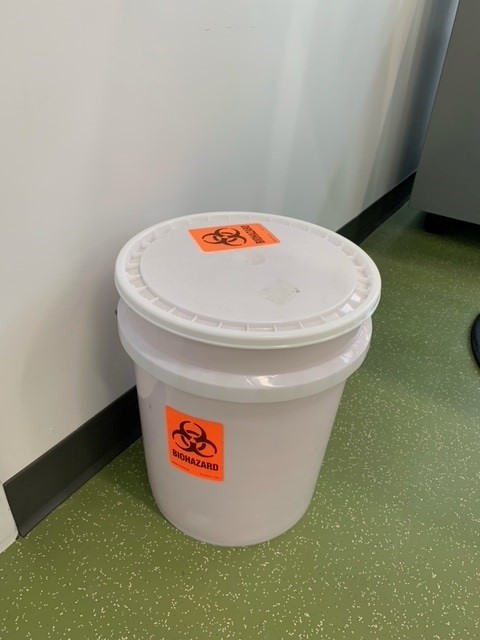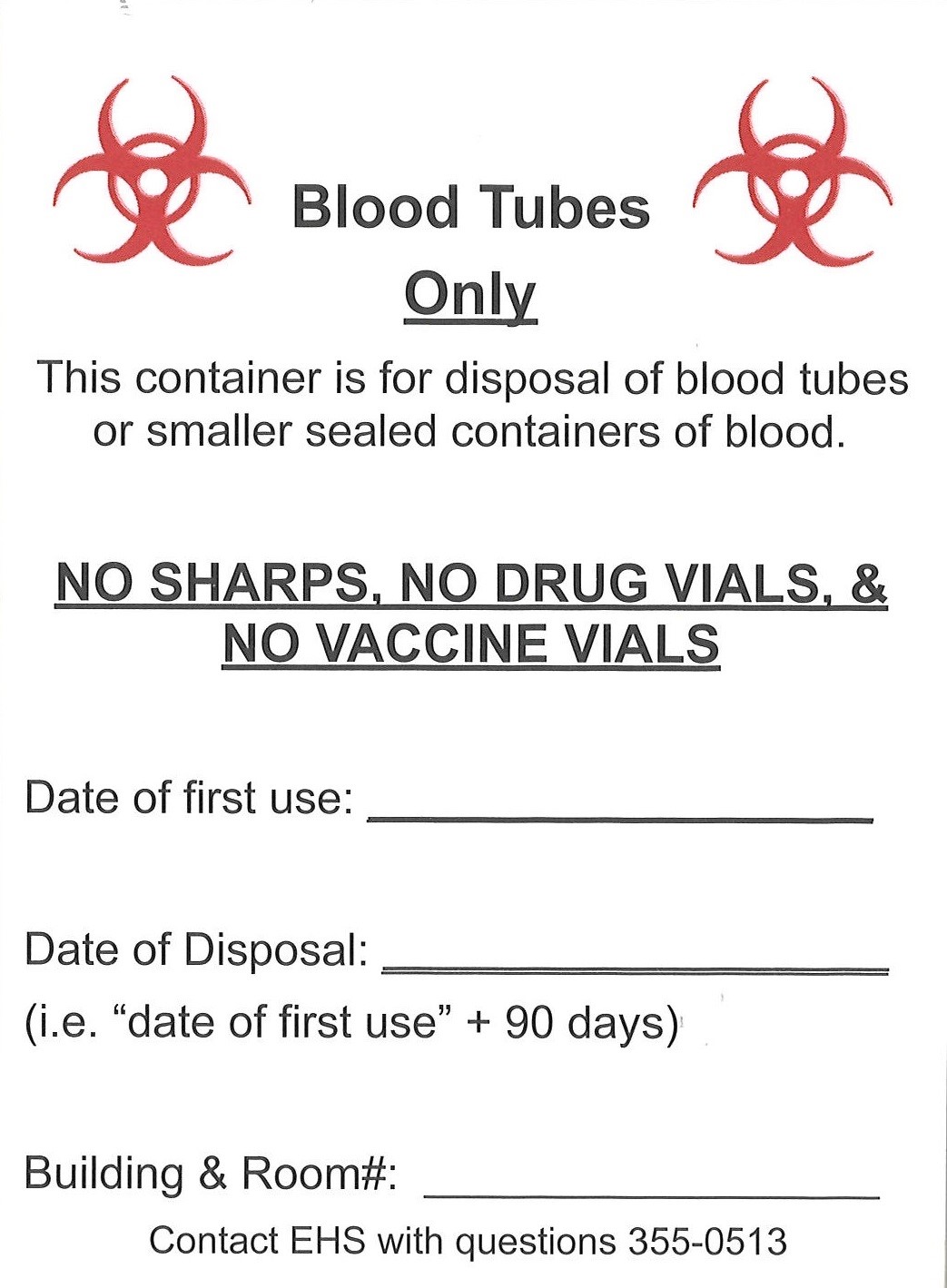Biohazardous Waste – Solids, Bio Bags, Blood Tubes
Definition
MSU requires that all employees involved in the generation, handling and disposal of biohazardous waste (which includes biological solid waste that cannot be autoclaved and blood tubes) comply with the provisions of the Biohazardous Waste Management Plan (PDF).
At MSU, the term biohazardous waste is used to describe different types of waste that might include infectious agents. Most of the biohazardous waste at MSU is decontaminated by either autoclave or chemical treatment. However, some biohazardous waste cannot be decontaminated by these methods. The following types of biohazardous waste must be disposed of through the EHS Hazardous Waste Program:
- Blood Tubes
- Solids: non-sharps that may contain other hazardous materials (i.e. chemicals, heavy metals, and/or radioactive materials).
Disposal procedures for liquid cultures, stocks, blood products, bodily fluids, and animal wastes not containing hazardous materials are described in the MSU Biohazardous Waste Management Plan.
Container Type
Blood Tubes
Blood tubes and other small, sealed containers of blood must be stored in a sturdy plastic bottle with a lid that is meant for liquids. Do not store blood tubes in containers that previously held solids, as they will leak. Reagent bottles (i.e. bleach) can be reused, but the original label should be removed or thoroughly defaced and an MSU Blood Tubes label should be affixed to the container.
Solids
Items that are contaminated with potentially infectious materials or recombinant DNA materials that cannot be autoclaved must be collected in a biohazardous bag. While in use, these biohazard bags must be secured in a manner that will eliminate spillage and access by insect vectors. All bags must be stored in a solid leakproof secondary container with a lid (i.e. Rubbermaid container/trashcan with a lid). The secondary container and lid must have a biohazard label. If you use a benchtop wire rack, it must sit in a secondary container and be covered when not in use or disposed of appropriately at the end of the work shift.
Red medical waste sharps containers must not be used for blood tubes or biohazardous solid materials.
Storage
Waste containers must be kept free of any liquids or residue on their exteriors. EHS Hazardous Waste Staff will reject any container with liquid or residue on the exterior until it has been cleaned.
All bags MUST be closed once requested a Hazardous Waste Request has been submitted to EHS.
MSU Waste Tag Required
Yes - A MSU Waste Tag is required for all biohazardous solid waste.
No – A MSU Waste Tag is not needed for blood tube waste.
MSU Waste Tags must be directly affixed to the waste container either with string, a twist tie, chain and clipboard, rubber band, or tape. MSU Waste Tags are provided by EHS and can be requested through an EHS Hazardous Waste Request.
Labeling
Blood Tubes
MSU Blood Tube labels can be requested through the EHS Safety Portal, or can be picked up at EHS label stations across campus.
Solids
A MSU Waste Tag should be filled out and completed when the biohazardous solid waste cannot be autoclaved or chemically disinfected. The contact information at the top of the MSU Waste Tag must be filled out to identify where the biohazardous waste was generated, the container size and type, and who to contact with questions regarding the waste container.
The Contents should be “Contaminated Lab Debris” with the specific biological components identified, and “100%” listed in the Volume column. Check the Biohazardous Agents box at the bottom of the MSU Waste Tag.
Guidance on how to accurately fill out the MSU Waste Tag can be found in the Waste Section of the EHS website.
Submit Hazardous Waste Request
When the container is full or close to the 90-day accumulation limit, submit a Hazardous Waste Request via the EHS Safety Portal as follows:
- EHS Website: ehs.msu.edu
- Log in to the Safety Portal through a preferred web browser using your MSU Net ID and EBS Password
- Select Hazardous Waste Request
- Blood Tubes (Biohazardous Solids) are found under the Common Process category


